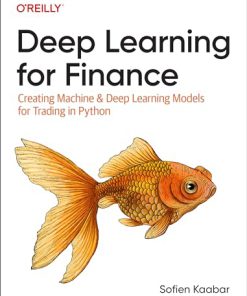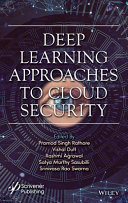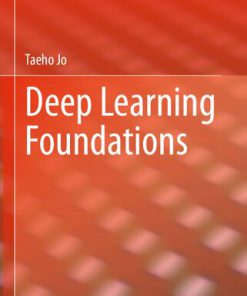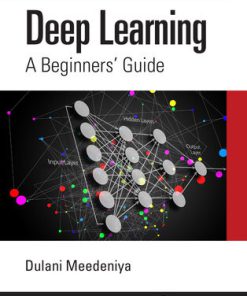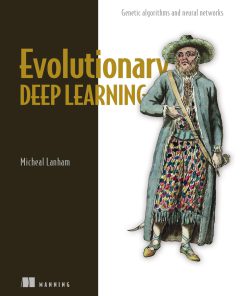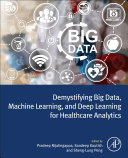Demystifying Deep Learning 1st Edition by Douglas J. Santry 9781394205622 1394205627
$50.00 Original price was: $50.00.$25.00Current price is: $25.00.
Demystifying Deep Learning 1st Edition Douglas J. Santry – Ebook Instant Download/Delivery ISBN(s): 9781394205608,1394205600,9781394205622, 1394205627
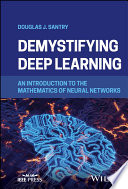
Product details:
- ISBN 10: 1394205627
- ISBN 13: 9781394205622
- Author: Douglas J. Santry
Demystifying Deep Learning
An Introduction to the Mathematics of Neural Networks
The study of Deep Learning and Artificial Neural Networks (ANN) is a significant subfield of artificial intelligence (AI) that can be found within numerous fields: medicine, law, financial services, and science, for example. Just as the robot revolution threatened blue-collar jobs in the 1970s, so now the AI revolution promises a new era of productivity for white collar jobs. Important tasks have begun being taken over by ANNs, from disease detection and prevention, to reading and supporting legal contracts, to understanding experimental data, model protein folding, and hurricane modeling. AI is everywhere—on the news, in think tanks, and occupies government policy makers all over the world —and ANNs often provide the backbone for AI.
Relying on an informal and succinct approach, Demystifying Deep Learning is a useful tool to learn the necessary steps to implement ANN algorithms by using both a software library applying neural network training and verification software. The volume offers explanations of how real ANNs work, and includes 6 practical examples that demonstrate in real code how to build ANNs and the datasets they need in their implementation, available in open-source to ensure practical usage. This approachable book follows ANN techniques that are used every day as they adapt to natural language processing, image recognition, problem solving, and generative applications. This volume is an important introduction to the field, equipping the reader for more advanced study.
Demystifying Deep Learning readers will also find:
- A volume that emphasizes the importance of classification
- Discussion of why ANN libraries, such as Tensor Flow and Pytorch, are written in C++ rather than Python
- Each chapter concludes with a “Projects” page to promote students experimenting with real code
- A supporting library of software to accompany the book at https://github.com/nom-de-guerre/RANT
- An approachable explanation of how generative AI, such as generative adversarial networks (GAN), really work.
- An accessible motivation and elucidation of how transformers, the basis of large language models (LLM) such as ChatGPT, work.
Table contents:
1 Introduction
1.1 AI/ML – Deep Learning?
1.2 A Brief History
1.3 The Genesis of Models
1.4 Numerical Computation – Computer Numbers Are Not eal
1.5 Summary
1.6 Projects
Notes
2 Deep Learning and Neural Networks
2.1 Feed‐Forward and Fully‐Connected Artificial Neural Networks
2.2 Computing Neuron State
2.3 The Feed‐Forward ANN Expressed with Matrices
2.4 Classification
2.5 Summary
2.6 Projects
Notes
3 Training Neural Networks
3.1 Preparing the Training Set: Data Preprocessing
3.2 Weight Initialization
3.3 Training Outline
3.4 Least Squares: A Trivial Example
3.5 Backpropagation of Error for Regression
3.6 Stochastic Sine
3.7 Verification of a Software Implementation
3.8 Summary
3.9 Projects
Notes
4 Training Classifiers
4.1 Backpropagation for Classifiers
4.2 Computing the Derivative of the Loss
4.3 Multilabel Classification
4.4 Summary
4.5 Projects
Note
5 Weight Update Strategies
5.1 Stochastic Gradient Descent
5.2 Weight Updates as Iteration and Convex Optimization
5.3 RPROP+
5.4 Momentum Methods
5.5 Levenberg–Marquard Optimization for Neural Networks
5.6 Summary
5.7 Projects
Notes
6 Convolutional Neural Networks
6.1 Motivation
6.2 Convolutions and Features
6.3 Filters
6.4 Pooling
6.5 Feature Layers
6.6 Training a CNN
6.7 Applications
6.8 Summary
6.9 Projects
7 Fixing the Fit
7.1 Quality of the Solution
7.2 Generalization Error
7.3 Classification Performance
7.4 Regularization
7.5 Advanced Normalization
7.6 Summary
7.7 Projects
Notes
8 Design Principles for a Deep Learning Training Library
8.1 Computer Languages
8.2 The Matrix: Crux of a Library Implementation
8.3 The Framework
8.4 Summary
8.5 Projects
Notes
9 Vistas
9.1 The Limits of ANN Learning Capacity
9.2 Generative Adversarial Networks
9.3 Reinforcement Learning
9.4 Natural Language Processing Transformed
9.5 Neural Turing Machines
9.6 Summary
9.7 Projects
People also search:
demystifying deep learning
demystifying parallel and distributed deep learning
demystifying deep reinforcement learning
demystifying and detecting misuses of deep learning apis
demystifying dependency bugs in deep learning stack
You may also like…
Computers - Artificial Intelligence (AI)
Computers - Artificial Intelligence (AI)
Deep Learning Foundations 1st editon by Taeho Jo 3031328795 9783031328794
Computers - Artificial Intelligence (AI)
Uncategorized
Computers - Programming
Uncategorized
Computers - Programming



